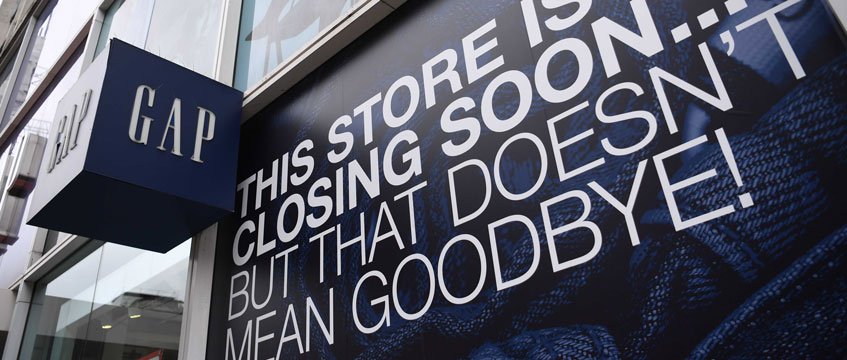New outlet concepts and fashion retail have boosted reletting activity within Gap’s empty store estate, more than a year after the retailer closed its 81 UK shops.
Research from Carter Jonas, exclusively shared with EG, found 43% of former Gap stores have been relet, totalling around 292,000 sq ft. A further seven stores (9%) are either under offer or have planning permission in process.
Notably, two out-of-town shopping centre locations have gained planning consent for conversion into fast-food restaurants. An additional high street space in London has been bought by a media company and will be repurposed for office use, while another in Derby will be transformed into a minigolf course.
The new total means just under half (48%) of Gap’s store portfolio is still empty, improving significantly from 78% vacancy in Q2 2022.
Researchers at Carter Jonas noted it was “unsurprising” that around half of the estate remains vacant, given the amount of economic volatility affecting the market during H2 last year.
“Numerous Gap units still have outstanding leases, but many have expired and some may have been surrendered. Combined with other costs to maintain a vacant property, this has the potential to generate huge rental losses for landlords,” said the report.
Out-of-town in fashion
Carter Jonas noted that confidence in out-of-town shopping centres has increased. Where it previously found in Q2 last year that none of those units had been let, 30% are now reoccupied and 13% are pending.
The report noted that nearly all of those spaces became outlet stores. H&M opened its first outlet at the former Gap at Affinity Staffordshire last year, while Bensons for Beds launched its first outlet in Gap’s former Doncaster store. Carter Jonas predicted the trend will continue as more retailers seek to offload surplus stock.
Town centre stores accounted for 63% of relet Gap stores. Those included both high street shops and those located within a shopping centre in a main retail area. Out of all of the town centre stores in the portfolio, 46% have been let and 8% are pending, up from 31% in Q2 2022.
Although only equating to 12% of Gap’s portfolio, 60% of the retailer’s out-of-town retail park locations are now occupied again.
Fashion retailers have increased their share in Gap’s floor area to just over half (51%) of the portfolio, up from 42% in Q2 – amounting to an increase of more than 140,000 sq ft.
Nonetheless, the report found the mix of incoming tenants has broadened. Around 17% of all relet stores are now leased to food and beverage operators.
London loses out
Losses are estimated to be greater in areas where market rents are high, including London. Some 72% of Gap’s footprint in London by floor area – 68% of stores – remains empty. That represents just over a fifth (21%) of the total store portfolio, both by floor area and units.
Nearly 74% of Gap’s floorspace in the Midlands has been relet. Many of those stores are out-of-town outlet locations.
The South West and Wales made significant progress in reletting Gap stores, with nearly three-quarters (74%) by floor area now occupied. A large proportion of locations in those regions are in prime town centre locations, which have been boosted by steady leasing activity from leisure and hospitality operators.
Gap re-entered the high street last year as a shop-in-shop within Next stores.
See also: Food and beverage operators bridge the Gap
To send feedback, e-mail pui-guan.man@eg.co.uk or tweet @PuiGuanM or @EGPropertyNews











